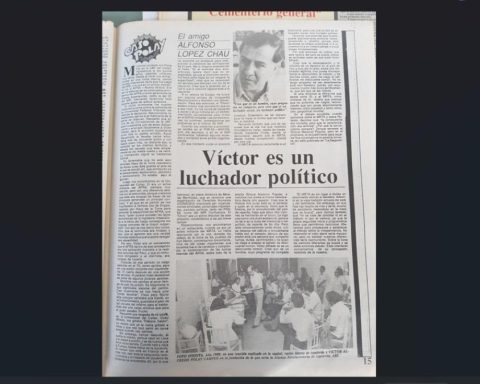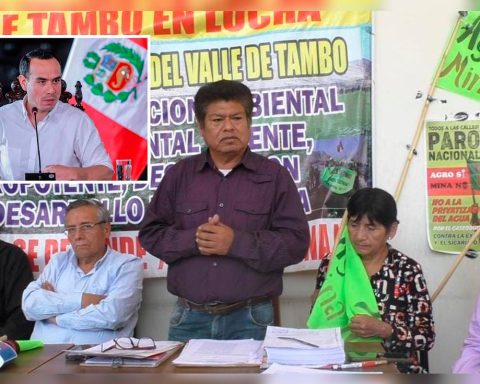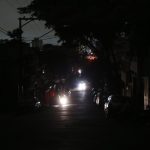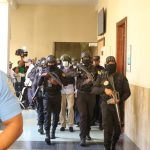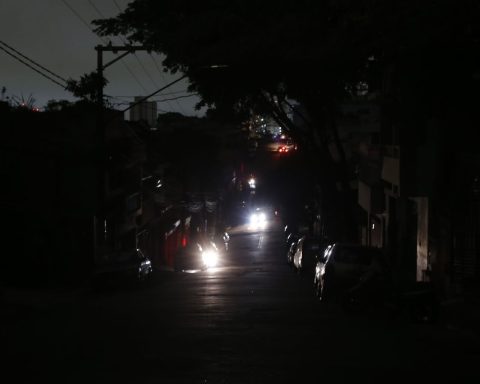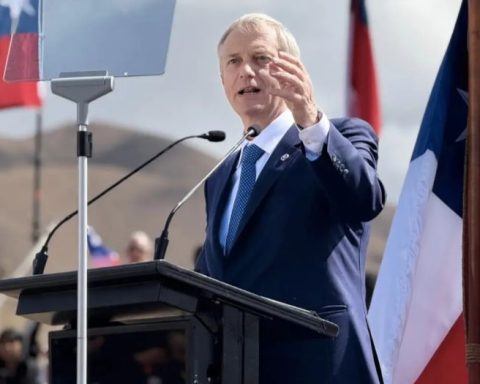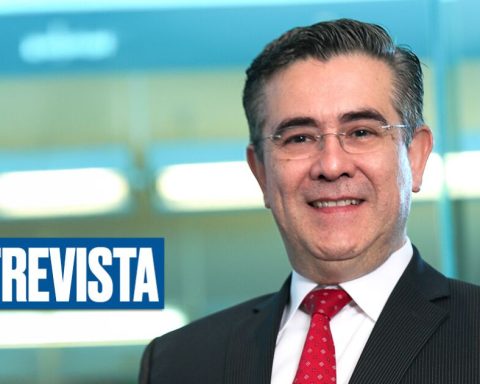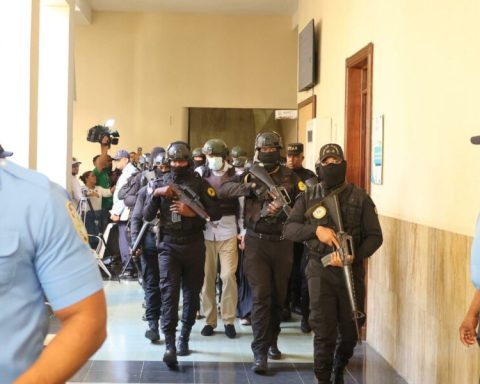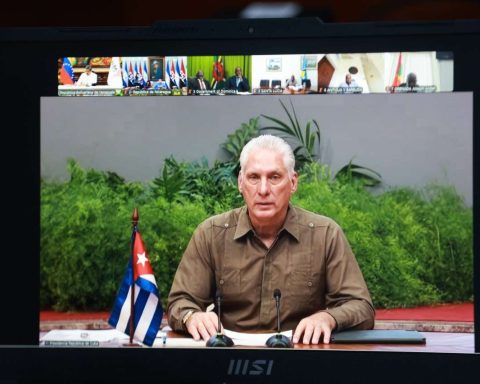By María Elena Hidalgo, special envoy
At 15 years of age, What worried Christopher Ramos Aime the most was helping his mother, Hilaria Aime Gutiérrez, to complete the 363 soles a month that she had to pay on a loan that Caja Huancayo did to him. It was what kept him awake at night and what explains why he worked in the Huamanga cemetery to raise the devilish sum that was escaping his mother, single, with four children, the last one two years and seven months old.
It was through the streets surrounding the cemetery that Christopher Ramos received the impact of a bullet in the back.
Hilaria Ayme cries when she realizes that if it hadn’t been for the debt, her son Christopher Ramos would not have had to go to work helping the bereaved to bring flowers, balloons and other presents to their deceased or cleaning niches. But the eventual 30 soles that he got per day were necessary to complete the monthly payment.
Sometimes they hired him for 45 soles a day to carry out strenuous agricultural work. But this time it was his turn to go to the cemetery. He had not participated in the demonstrations.
His mother recounted:
“My son was a support. From the cemetery he sometimes got 30 soles. Of that amount, he gave me 20 soles and the other 10 he asked me to keep because he dreamed of buying a motorcycle to work. He thought he would make it at 18 years old. He got up to 700 soles when they killed him ”.
working child. Christopher Ramos Aime, and next to him, his mother Hilaria Aime Gutiérrez, with her younger siblings. Photo: La República composition
Hilaria Aime Gutiérrez speaks as if her son were alive. She is still in shock from the moment she received a doctor’s call to identify a body. She thought it was a mistake. Christopher Ramos was not a protester. Also, he was 15 years old. He was only concerned with paying off the debt, repaying it so that his mother would request another loan.
This is how he remembered the day his son was killed:
“He was shot at six in the afternoon at the corner of the cemetery, he was behind a pole. The doctor who did the autopsy told me that the shot came from above. That day at nightfall he did not arrive as he used to. I couldn’t call him because the power had gone out and the phone ran out of battery. I thought he had gone to his father’s house. I never thought he was dead by then. The bullet entered his back and he exited through the side. His thirteen-year-old friend tried to pull him, but he couldn’t because they kept shooting. Until at eight o’clock in the morning the next day a doctor called me to go and examine my son”.
A call to notify that your son has been killed is something that no one would ever want to receive.
I’m still waiting
On the other hand, Janet Román Pareja, wife of the master mason Raúl García Gallo, 35 years old, was assailed by fear when he told her that he would join the protest demonstrations. She had heard that the military had come out and that they were shooting. It was December 15.
Janet Román remembered it like this:
“He was very loving, kind and attentive to his children. Ever since I got pregnant, he told me, ‘Janet, you’re not going to work anymore. Dedicate yourself full time to your children, I’m going to take care of it”. We have four children, ages 18, 14, 11 and 9. The 9-year-old is the one who suffers the most. He tells me: ‘Mom, I want my dad to come back. We are going to my dad’s grave and we have to get him out of that box.’ I tell him: ‘No, my son, your dad is now an angel who is watching over us from above.’ ‘No, my daddy is sleeping’, he tells me. We were together 14 years and 8 married. I met him when he worked in a restaurant. He came to eat and I was the cook. Just as he was very loving, he also joined the just causes. That day he left at 5:30 in the morning and at 5 in the afternoon he called my eldest son and told me: ‘Mom, my dad has been shot! Let’s go to the hospital!’. I went to the new hospital and couldn’t find it. He called Raúl’s cell phone and the police answered that they had his cell phone and he told me that they have it at Social Security ”.
Then came the unacceptable moment, the hour that no one wanted to attend. The encounter with death. The single account of Janet Román says it all:
“I arrived and consulted the guachimán about my husband and he told me: ‘Ma’am, you have to be strong.’ And I tell her: Why? They have told me that my husband is stable. It’s what they told me. And he tells me: ‘Follow me’. I was with my brother. We follow him and he opens the door of the morgue and I ask him: ‘Why are you bringing me here? Take me to my husband, I want to see him! He approaches a body and removes the white sheet and I see my husband lying there. It was not fair. For me, my husband is sleeping and I know that at any moment he is going to get up. I shook him and said: ‘Get up, tell me something, open your eyes!’ The guachimán tells me: “No, ma’am, your husband is deceased.” ‘No, my husband is sleeping and at any moment he’s going to get up and he’s going to talk to me.’
Master mason. Raúl García Gallo did participate in the protest because he considered it legitimate. He left behind his children who are 18, 14, 11 and 9 years old. Photo: La República composition
On the other hand, the parents of Josué Sañudo Quispe, 31, Germán Sañudo and Julia Quispe, assured that their son did not join the protests. They flatly deny it. And they are mortified when there are those who, to justify the force of the Army, affirm that the deceased were extremists, vandals, violent.
Remembers his father Germán Sañudo:
“He had completed his studies in Business Administration at the San Cristóbal National University, and he also studied topography at Sencico. He was multifaceted. He got into different turns: he could sell toys, candy, clothes. He lived alone for seven years ”.
According to his parents, Josué Sañudo lived in the Conchata area, where the clashes took place. That day, December 15, they invited him to have lunch at his family home, in Carmen Alto. When it was over, at almost three in the afternoon, the conflict had already broken out in the streets. They told him to stay. He did not want. This is what his mother, Julia Quispe, remembered:
“’Do you have a wife or children to return? Stay!’ I told him. But she preferred to return to her room. When she was returning, a bullet hit him in the right area of the chest and exited through his back. The neighbors came out to help him, he was still with signs of life. Firefighters took him to the hospital, where doctors came to intubate him. But at 3:50 p.m. he passed away. It seems like a dream to me, it seems to me that he is going to return at any moment. And I’m waiting. It’s been 15 days and he doesn’t come back or call me my son.
Exemplary son. José Sañudo Quispe lived alone near the airport. His parents and sisters in the last goodbye in the cemetery. Photo: La República composition
death on camera
Automotive mechanic and transporter Edgar Prado Arango, 51, was not at all related to the demonstrations either. He received a projectile when he was trying to help a wounded man. The video circulates on social networks and is powerful evidence that the Army fired indiscriminately, violating the Regulations for the Use of Force (RUF), which has been in force since 2020.
Prado worked for the Ombudsman’s Office, from where he left to pursue his own business. He had two Hilux vans that he rented to institutions. These vehicles were the life of him.
It all happened four houses from his. Her sister Edith Prado said:
“I looked out the window and saw that my brother Edgar was coming out. He saw that there were several wounded outside. So, I said to him from the second floor, where I was: ‘Edgar, where are you going? Brother, please don’t go!’, he yelled at him. He replied: ‘Sister, don’t be mean! We must help the wounded! Poor children, they are bleeding!’ And he ran away. I saw that he was attending to the wounded and suddenly he fell. And I, who was watching him from the window on the second floor, said to myself ‘poor my brother, he must have fainted seeing the wounded’. Suddenly, the protesters came out of a passage saying: ‘he is also hurt! He is dead! ‘. I ran down quickly yelling for help. Two of the protesters took him to the door of the house. My brother tells me: ‘Calm down, I’ll be fine’. It was obvious that he had been shot in the stomach from above. The blood came out like a pipe. A neighbor was with another wounded. And he asked me to get the car out. When Edgar was wounded, he told me: ‘Help the boy.’ I took the keys out of his pocket and took the two of them to the hospital.
Protective. Edgar Prado Arango was murdered for caring for the wounded who were at the door of his house. Photo: La República composition
At 7 in the morning of December 17, Edgar Prado Arango lost his life. Everything was filmed: I was not at the protest. It is accredited that he did not carry weapons. It was documented that he was assassinated.
To be continue…



